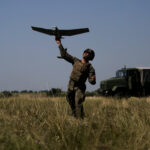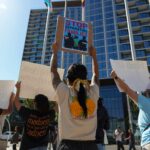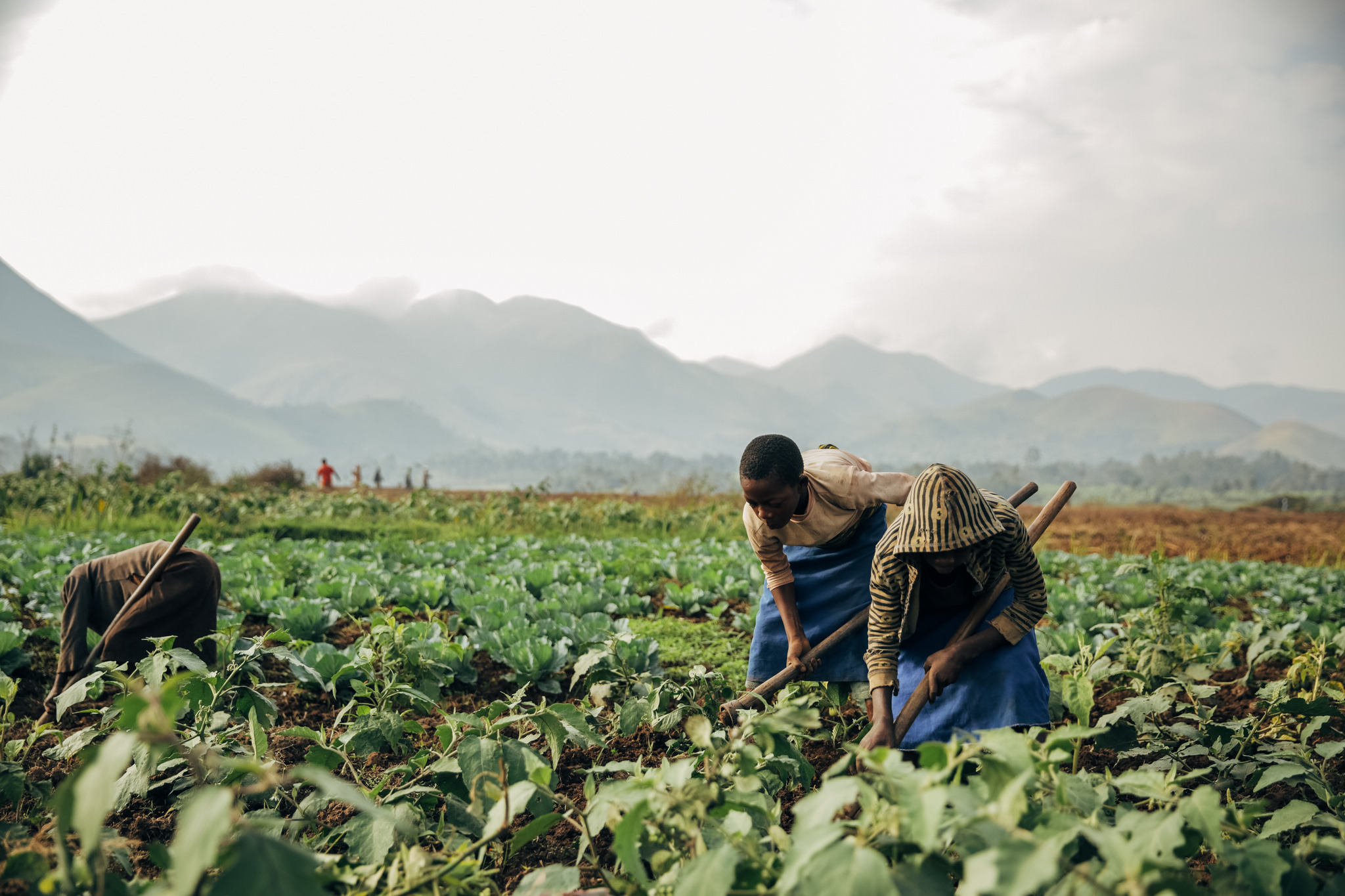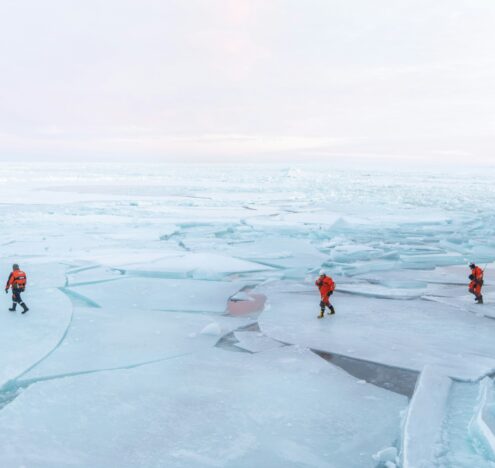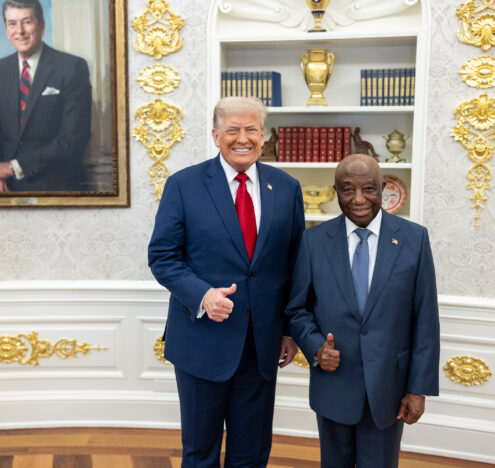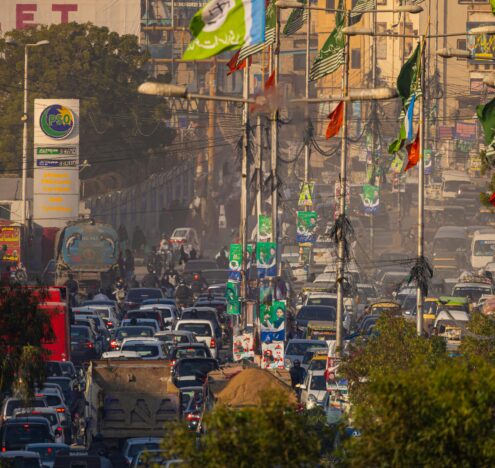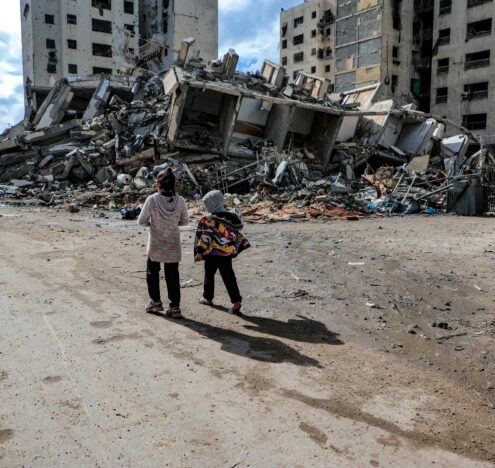Debates on civilian protection in war zones have largely centered on the role played by international actors — UN peacekeepers, NATO military intervention forces, and so on — in “providing” protection to seemingly passive local civilians, often neglecting the crucial role played by these civilians in protecting themselves. This focus is beginning to change, however, as an increasing number of scholars and policy-makers alike consider the strategies employed by local civilians to protect themselves and their loved ones from both non-state armed groups and state militaries.
Although previous scholars have developed useful ways to categorize self-protection strategies, from civilians accommodating armed actors to civilians remaining neutral or even resisting the control armed actors exercise over their communities, Carla Suarez notes that few have distinguished between different kinds of threats and different kinds of actors, to see if these have a bearing on the protection strategies chosen. Distinguishing between these herself, the author contributes to the growing literature on “self-protection” by examining the case of two communities in the Democratic Republic of Congo’s Kivu Province and asking what strategies these civilians employ to protect themselves from both direct and indirect physical threats posed by the “Mai-Mai” armed groups, on the one hand, and the Congolese armed forces (FARDC), on the other.
For eight months during 2014-2015, the author conducted ethnographic field research in Nyabiondo and Sebele in eastern DRC, where she interviewed 184 community members about their strategies for self-protection in relation to the Mai-Mai armed groups and the FARDC. Although the official “end” of the civil war in the DRC was fifteen years ago (with a peace agreement in 2002/2003), these community members still live in what anthropologist Paul Richards has termed a situation of “No Peace — No War,” where the intensity of violence between armed actors fluctuates over time. The Mai-Mai armed groups active in this area began — and are still widely perceived — as self-defense forces intent on protecting and defending the local civilians of similar ethnicities, initially from the various armed groups once active in the area funded by neighboring countries and more recently from the FARDC; as such, these armed groups exaggerate divisions between “local” and “foreign” forces and communities to sustain their purpose. The FARDC, although presumably mandated with providing security to Congolese civilians, is often perceived instead as a source of insecurity by these communities, due to its acts of predation on and extortion from local populations—often attributed to soldiers’ meager salaries and living conditions.
In this context, the author finds that community members were always alert to the armed actors and patterns of violence around them, developing a “sophisticated understanding” of these that enabled them to make assessments about their security and the best ways to limit the threats they faced. In particular, the author finds that community members developed three main approaches to protecting themselves. First, civilians learned how to best determine when and where armed confrontations would occur by learning patterns of armed actors, noting whenever something was out of the ordinary, and by observing and checking in with people connected to Mai-Mai combatants in the community. Based on this assessment, civilians could make sure not to be in an area where they anticipated an armed confrontation. Second, to influence armed actors away from predatory behavior against the civilian population, community members used whatever symbolic or material resources they had at their disposal to create leverage in negotiations with these armed actors. This approach proved more effective with Mai-Mai armed groups than with the FARDC, mainly because the Mai-Mai wanted to guard their reputation as protectors of their local communities and therefore were influenced by appeals to this identity and purpose. Mai-Mai groups — and to some extent the FARDC — were sometimes also influenced by the fact that civilians provided them with material support and therefore had a measure of leverage over them. Finally, civilians used the presence of multiple armed groups in the area to their advantage, sometimes in deceptive ways, as when they distributed leaflets claiming to be the Mai-Mai and threatening an armed attack if the FARDC did not stop the widespread mistreatment of community youth — a move that some respondents argued limited FARDC abuses at least temporarily. As the author concludes, these “civilians not only navigate precarious conditions within armed conflict, but they also exploit these conditions to improve their security situation.”
CONTEMPORARY RELEVANCE
The findings of this study — and others like it focused on civilian “self-protection” strategies — are incredibly relevant to current debates on the “Responsibility to Protect” and civilian protection, more generally, particularly in the “no peace — no war” contexts that are so characteristic of armed conflict today.** As the author reminds us, civilians in such contexts are full agents of their own protection, not mere passive recipients of protection and other forms of assistance. The question becomes, then, how does an understanding of local civilians as agents rather than recipients of protection change approaches outside actors might take in serving or assisting those civilians when they are at risk, whether in the DRC, Syria, or Yemen?
Furthermore, this study brings to the surface a distinction between civil resistance and nonviolent self-protection strategies, the latter of which may entail some level of subtle “resistance” towards armed actors but more often entail a measure of acquiescence to the on-going presence of armed actors in one’s community. As the author notes, these self-protection approaches are less about challenging the “broader social order or the actors that shape it” and more about surviving — enhancing the security of oneself and one’s loved ones. Such a distinction reminds us that civil resistance itself always entails a substantial degree of risk in terms of one’s security — in a sense an emphasis on the pursuit of justice over the pursuit of security (at least in the short term) — and that nonviolent self-protection strategies reverse that emphasis. The important point, though, is that these decisions about which to privilege — justice or security — are made by those whose lives are directly affected. With military intervention for protection purposes, on the other hand, there is often slippage between protection and more substantive goals (like regime change or coercion) to the extent that civilian security can become the casualty of military campaigns to oust a particular leader (see NATO’s air war in Kosovo/Serbia in 1999 or in Libya in 2011) — as violent conflict escalates and civilians are inevitably caught in the crossfire — without the direct input of those being “protected.”
PRACTICAL IMPLICATIONS
To return to the question posed above about how knowledge of these self-protection strategies and an understanding of local civilians as agents of their own protection can shape outsiders’ attempts to serve or assist these civilians when they do face threats, there are three considerations. First and foremost (and perhaps obviously), international actors should pay attention to the protection strategies civilians are already employing on the ground to assess how they could best support and/or supplement these, given local dynamics, as determined by these civilian communities (being especially mindful of those cases where association with a visible international presence of a particular kind could actually be a liability for these communities). Second, an understanding of these self-protection strategies highlights the potential inherent in interacting with armed actors as full, complex human beings with various needs, values, social ties, and points of leverage, all of which can be used to influence them in a way that enhances civilian security. In other words, examining the particular motivations armed actors may have for predation, as well as their sense-making regarding their own uses of violence against civilians, can assist in determining avenues for stopping those forms of predation and violence; if actors can find ways for armed actors to meet their needs (for a livelihood/income, for perceived legitimacy, for their own security) without putting civilians at risk, possibilities for protection open up. As the author notes, more attention should be given to day-to-day humanitarian negotiations with armed actors — that have real potential to enhance civilian protection — rather than only to high-level political negotiations. Third, a focus on local experiences of predation — even at the hands of those who are supposed to be protecting civilians (as in the case of the FARDC in this study) — draws attention to the way in which military strategies of protection can themselves hover precariously close to violation. This fact should make those who wish to assist civilian protection efforts more skeptical of military strategies — whether international intervention or material/logistical support to state militaries — which are often unquestionably assumed to be the most effective method of civilian protection.
**Responsibility to protect: An emerging norm (adopted by the UN in 2005) that argues each individual state has a responsibility to protect their populations from genocide, ethnic cleansing, war crimes, and crimes against humanity, and that if they demonstrate themselves unwilling or unable to do so, this responsibility falls to the international community.
Published in collaboration with the Peace Science Digest, which summarizes and reflects on current academic research in the field of peace and conflict studies. To subscribe or download the full piece, which includes additional resources, visit their website.







